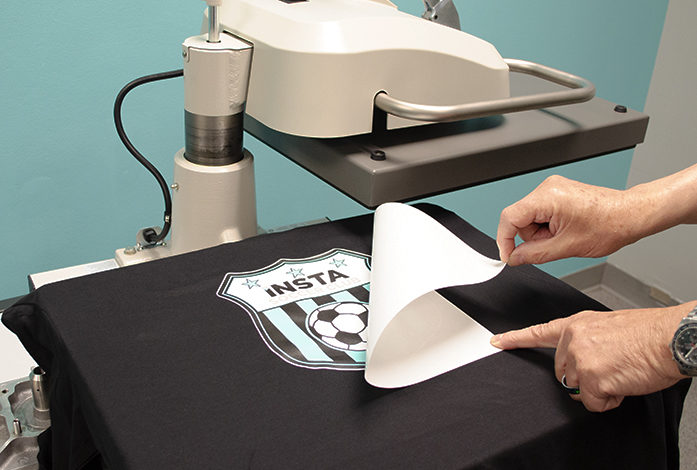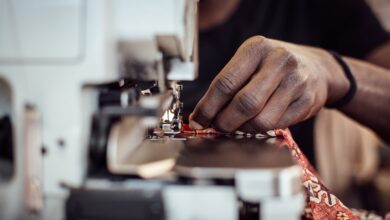
The athletic sport, team, and uniform markets have rapidly grown, and more apparel decorators are entering the fray. Soccer, basketball, football, and baseball are leading the charge at all levels, from organized sports groups to college/university teams and professional leagues.
But what is really involved in offering printing services for teamwear clients? Take into consideration orders for school teams or other organized sports groups, which are typically small and complicated. The order may comprise of different shirt sizes with specific numbering needs for personalizing the shirt for each player. Setting up a print job for each personalized shirt is daunting and time-consuming. So, what is the best solution? Heat transfers.
Sports numbers and letters can be printed in multiples and used from stock inventory on an as-needed basis. With a quality heat press, transfers can easily be applied to the garments in seconds. Let’s first discuss some basic types of transfers.
Heat transfer types
Cad-cut vinyl is one solution many decorators are using. However, it does require the investment of a cad-cut machine and rolls of vinyl to keep in stock. The downside? Be prepared to spend time weeding and peeling the individual cut numbers and letters once they have been cut out. This is no easy task when working with a rush order, or the lettering is intricate.
Another popular type is digital transfers. To efficiently utilize digitally printed numbers or letters, it requires a digital printer/cutter machine and special paper. Otherwise, the numbers and transfers would have to be cut out by hand. These machines can be pricey depending on the size, and the paper costs also need to be factored into your price.
A better solution is using pre-printed number and letter transfers. Unless you possess the know-how and equipment to print your own transfers, custom or stock numbers and letters can be purchased from a vendor. These pre-made transfers are cost-effective and come in single or multiple colors and fonts. The transfer can be applied immediately to multiple and variable sports apparel quickly, cleanly, and efficiently.
Athletic and performance fabrics have also been evolving rapidly in recent years to give the wearer better fit and wicking properties. Although 100% cotton, cotton and polyester, 100% polyester, Lycra and polyester blends, 100% nylon, or nylon Spandex blends are still widely used, there are new synthetic and other plant-based blends on the market. Bamboo, modal, viscose, rayon, Supplex, Tactel, Meryl, and Tencel are just some of the latest fabrics that are either synthetic or plant-derived. Be sure to check the fabric components of the shirts to be decorated. The transfer may need to be customized if more stretch is needed, a blocker for dye migration, or the size of the transfer.
Why a quality heat press matters
Obviously, to adhere to any of the transfer options mentioned above, a quality, durable heat press machine is needed. Investing in a quality heat press can save thousands of dollars over time. Not all heat transfer machines are created equal, so look for heat presses with a reputation for even temperature and pressure distribution across the entire platen. Purchasing a mediocre heat press can cause the transfer to peel off entirely or in parts, especially after being laundered only once or twice. It’s not worth risking your shop’s reputation or having to pay restitution all because the heat transfer machine did not do its job.
There are many types of heat transfers machines. Most users prefer a swing-away press, where the upper platen can be turned 180 degrees. This offers an unobstructed view of the entire lower platen, allowing users to layout their transfers across the entire print area. Another type of transfer machine is the clam press, where the upper and lower platens are aligned, and the upper platen moves down for pressing. More specialized presses that accommodate caps or labels are also available.
Another consideration when choosing a heat press machine is whether to obtain a manual or automatic version. The automatic is great to have, as it opens and closes by just pushing some buttons. It speeds up production and saves time and muscle power. However, it is pricier than the manual option.
Some transfer machine manufacturers also offer accessories that can further simplify the transfer process. Special platens that can accommodate buttons, zippers, panels, or pockets can be purchased separately.
The versatility of heat transfers enables the apparel decorator to apply personalized numbers or letters to various garment types and sizes with ease and speed. Heat transfers are recognized as a durable, convenient, and efficient way to apply numbers, letters, logos, and other decorations to multiple areas of a finished garment.




